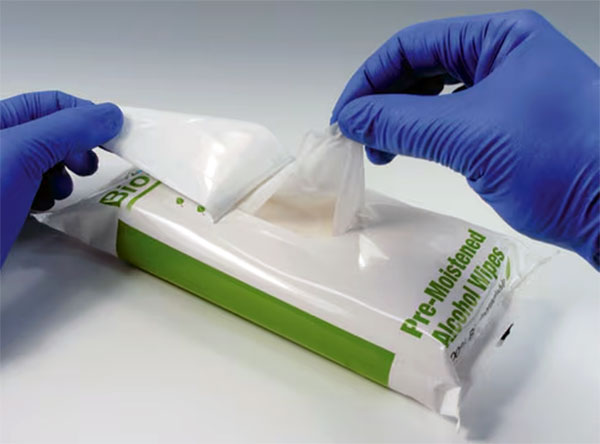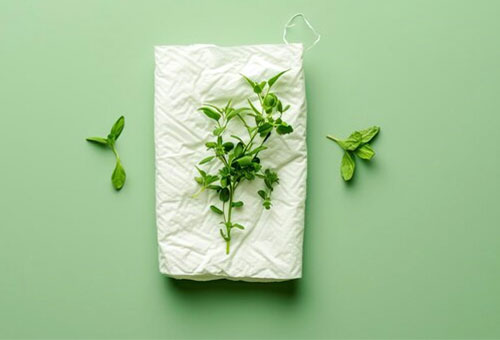+86-18927501869
- All
- Product Name
- Product Keyword
- Product Model
- Product Summary
- Product Description
- Multi Field Search
 English
EnglishViews: 1043 Author: Allen Yi Publish Time: 2025-09-25 Origin: Site

Wet wipes, once considered a luxury item for travelers and high-end consumers, have now become a daily essential in households, hospitals, gyms, and even industrial settings. This evolution reflects not only changes in consumer behavior but also technological progress in wet wipes factories and the competitive strategies of wet wipes suppliers worldwide.
The first modern wet wipes appeared in the 1950s in the United States. They were marketed as a convenient hygiene solution for travelers and mothers with young children. However, at that time, production costs were high, packaging technology was limited, and consumer awareness was low. Wet wipes remained a niche product.
By the late 20th century, globalization, mass manufacturing, and improved wet wipes factory technology drove costs down. Brands began positioning wipes not just as a convenience but as a lifestyle product. Makeup remover wipes, baby wipes, and early disinfectant wipes entered mainstream markets.
The COVID-19 pandemic changed everything. Suddenly, disinfectant wipes were not optional — they were essential. Demand outpaced supply, and wet wipes suppliers struggled to secure raw materials. Nonwoven fabrics, alcohol, and preservatives became global commodities. This event solidified wet wipes as a permanent category in global hygiene.
The global wet wipes market is valued at over $25 billion in 2025, with an expected CAGR of 6–7% through 2030. Leading growth drivers include:
• Rising awareness of personal hygiene.
• Growing demand for eco-friendly, biodegradable wipes.
• Expansion of private label products via e-commerce.
• Wider applications across healthcare, cosmetics, household, and pet care.
• In short, wet wipes are no longer a luxury. They are a daily necessity.
Behind every pack of wet wipes lies careful engineering. From the nonwoven substrate to the solution formula and packaging design, each element determines product performance and consumer satisfaction.
Most wipes use spunlace nonwoven fabric, known for strength, softness, and absorbency. Others include:
Airlaid fabrics: absorbent but less soft.
Cotton blends: eco-friendly but more expensive.
Bamboo and wood pulp fibers: biodegradable options increasingly demanded by eco-conscious buyers.
Quality checks at the factory level: tensile strength, softness, absorbency, and biodegradability.
The liquid inside wipes defines their function.
Baby wipes: purified water, aloe vera, glycerin, fragrance-free.
Makeup remover wipes: micellar water, mild oils, botanical extracts.
Disinfectant wipes: alcohol or quaternary ammonium compounds, proven against bacteria and viruses.
Pet wipes: pH-adjusted to avoid irritation.
Advanced wet wipes suppliers offer in-house R&D to customize formulas for private-label buyers.
Thickness & ply count: heavy-duty vs. everyday wipes.
Embossing: texture improves cleaning efficiency.
Folding systems: Z-fold, interfold for smooth dispensing.
Packaging innovations: flip-top lids, biodegradable films, travel-size packs.
For businesses sourcing from a wet wipes factory, understanding anatomy helps them request the right customization. For consumers, it ensures they choose safe, effective wipes.
Modern wet wipes factories are highly automated facilities combining material science, chemistry, and precision engineering.
Raw Material Selection: High-grade fibers sourced from certified suppliers.
Solution Preparation: Mixing tanks produce liquid formulas under cleanroom conditions.
Impregnation: Rolls of nonwoven fabric saturated with precise dosing systems.
Cutting & Folding: Sheets are cut and folded automatically.
Packaging: Wipes sealed into pouches, tubs, or canisters.
Quality Inspection: Microbial testing, moisture level checks, and packaging integrity.
Top wet wipes suppliers comply with:
• ISO 9001 and ISO 22716 (GMP).
• FDA registration for U.S. exports.
• CE mark for EU medical wipes.
• Biodegradability certifications for eco products.
OEM: Manufacture under the buyer's brand.
ODM: Provide full product design, formula innovation, and packaging.
Leading wet wipes suppliers support clients with regulatory paperwork, export documentation, and market trend analysis.

The largest and most stable segment. Baby wipes require extreme softness, hypoallergenic formulas, and dermatological safety.
Makeup remover wipes, intimate hygiene wipes, and deodorizing wipes dominate the beauty segment.
Disinfectant wipes for hospitals, clinics, and households. Compliance with EN and FDA standards is critical.
Surface cleaning wipes, kitchen wipes, car wipes, and industrial degreasing wipes.
Specialized wipes for grooming, ear cleaning, and paw sanitization.
Each category requires different manufacturing expertise, proving why sourcing from an experienced wet wipes factory matters.
Consumers now expect:
Safety: No harsh preservatives, dermatologically tested.
Sustainability: Biodegradable fabrics, recyclable packaging.
Value for Money: Affordable packs without compromising quality.
Convenience: Easy dispensing, travel packs, multi-use wipes.
Brands that align with these values capture loyalty and grow market share.
For businesses, selecting a reliable wet wipes supplier can make or break success.
Factory scale & capacity: Can they meet demand spikes?
Certifications: ISO, FDA, dermatological testing.
R&D capabilities: Ability to customize formulas.
Packaging flexibility: Range of options to differentiate branding.
Global shipping experience: Knowledge of customs and compliance.
• Low-cost suppliers with hidden quality issues.
• Fake certifications.
• Poor communication or lack of transparency.
A trusted wet wipes factory is not just a vendor but a strategic partner. They can help reduce costs, ensure compliance, and innovate new products faster.

Biodegradable substrates (bamboo, viscose, wood pulp) are replacing plastics.
Although controversial, R&D is advancing in truly flushable, sewer-safe wipes.
AI-driven quality monitoring, robotic packaging, and blockchain for supply chain transparency.
Wipes tailored for niche segments — from gym wipes with cooling effects to kids' wipes with playful packaging.
Wet wipes have evolved from a travel luxury to a household essential. Today, they are central to hygiene, beauty, healthcare, and convenience. For businesses, partnering with the right wet wipes suppliers is critical to success in this competitive industry.
At Clean-Wipe, we combine decades of expertise, advanced factory capabilities, and eco-friendly innovation to deliver customized wet wipe solutions worldwide. Whether you are looking for baby wipes, medical disinfectant wipes, or sustainable private-label products, our wet wipes factory is your trusted partner.
Contact us today to discuss your OEM/ODM requirements and discover how we can help your brand grow in the global hygiene market.
Sywipe seizes every opportunity to use high-quality resources, including peer-reviewed research, to support the facts in our article. Learn more about our factory and how to keep the content accurate, reliable, and trustworthy.
• What You Need to Know About Wet Wipe Materials?
• How to Choose the Right OEM Partner for Wet Wipes?
Our Customers Always Come First
Trust is the Foundation of Our Service
sales@clean-wipe.com
sywipe@clean-wipe.com
Room 4611, No. 372 Huanshi East Road, Yuexiu District, Guangzhou,China.
+86-18927501869 / +86-20-81608597
/ +86-18927501869